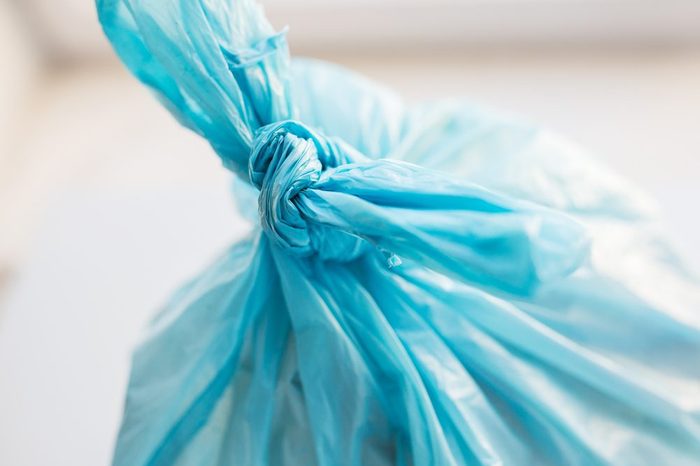
Shopping bags
Sometimes you forget your reusable shopping bags and end up coming home with a few plastic and paper bags you ultimately stuff in drawers, under the sink, and alongside the trash bin to use for a rainy day. But the amount you use never quite catches up with the amount you have stored away. Clear up some space in your kitchen by recycling them, or check with shelters and food pantries to see if they can be of use.

Scratched-up cutting board
Much like kitchen appliances, your cutting board has a shelf life. All that chopping of veggies and fruits has probably given your cutting board plenty of cracks and scratches, and bacteria has likely found a home in those deep grooves. Unless you are cleaning your cutting board regularly, you may need to replace it more often.
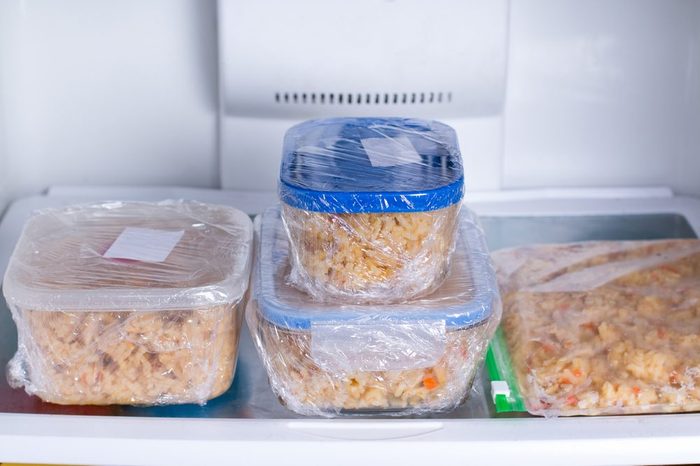
Freezer-burnt food
Just because putting food in the freezer helps it last longer, doesn’t mean it lasts forever! While the freezer can keep your winter soup good for a few months, if your items look like they got stuck in a snowstorm, you can bet they’re not going to taste as good as they should.
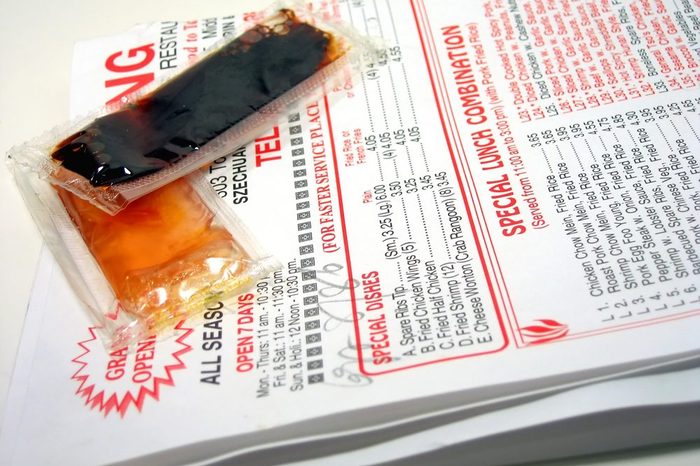
Take-out menus
Though your take-out food usually comes with a menu or two, the reality is, you end up stuffing all that wasted paper in a drawer, and before you know it, it’s hard for you to close your kitchen drawer. Plus, those menus are probably available online, so toss them!
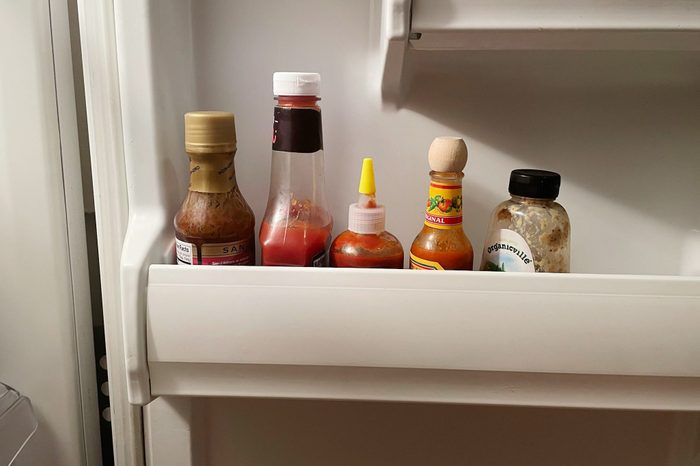
Expired or separated condiments
You may be quick to throw out moldy strawberries in the fridge, but what about the condiments taking up space on the fridge door? It’s easy to forget about things that come in a jar, have a longer shelf life, you don’t use often, or are stacked in a space you don’t pay much attention to. Spring-clean your kitchen staples by checking that bottle of sauce’s best-used-by date, and seeing if the ingredients have begun to separate or smell funny.
16 Condiments That Are Secret Health Bombs (And What to Eat Instead)
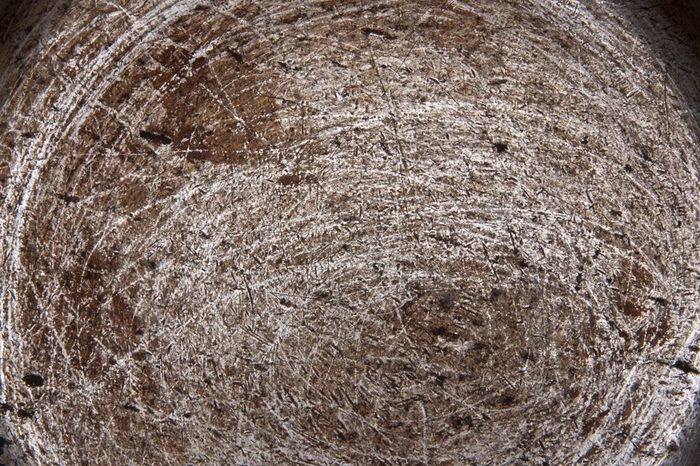
Scratched nonstick pans
The point of nonstick pans is to keep those scrambled eggs and pan-seared chicken from crusting to the pan, leaving you with less to clean. But if the pan has scratches, it’s no longer nonstick, and therefore not doing its job!
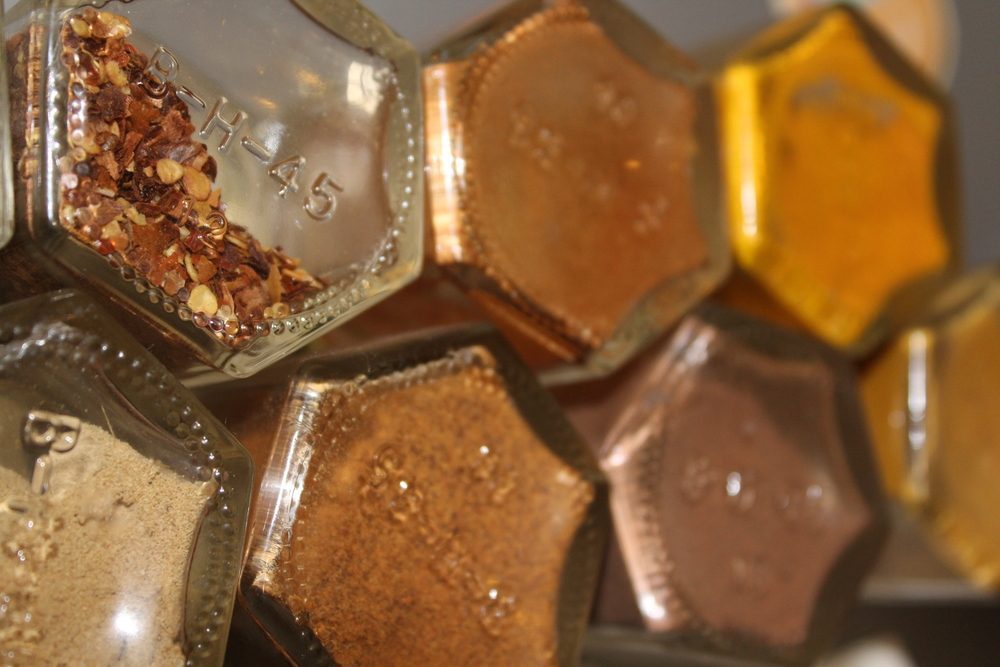
Old spices
If you’ve had your spices hanging around for a year, it’s time to swap them out for new ones. Spices lose their potency and flavor over time, so you don’t need to feel guilty about giving up a half-full jar, because it’s no good anyway.
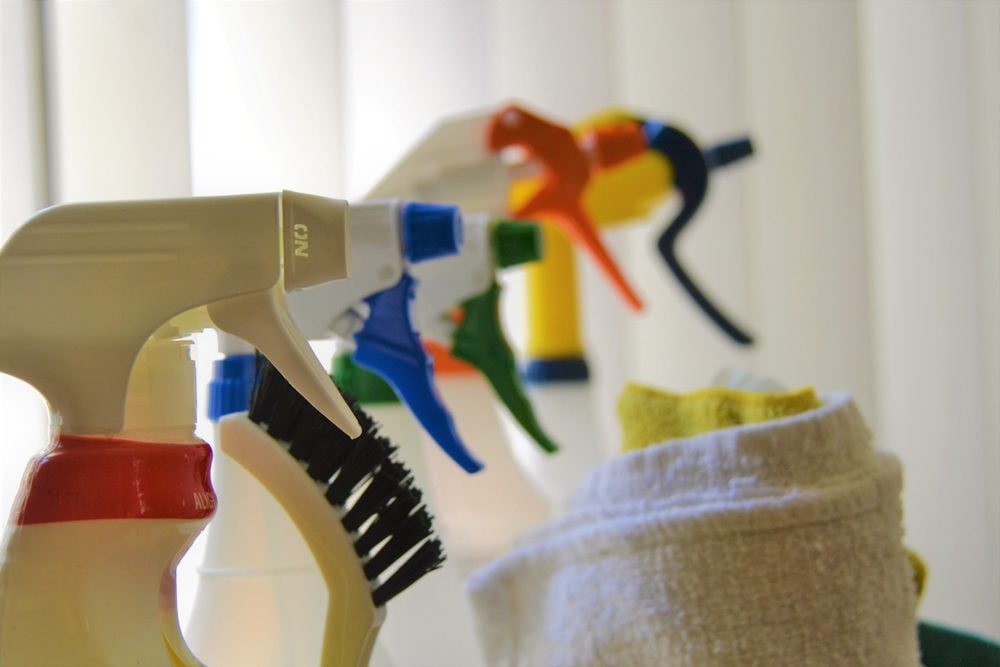
Unused cleaners
Household cleaners have a shelf life, and if you’re not using them regularly, you’re certainly wasting your money on them. Pinpoint the cleaners you know you need, and make sure they’re still good. Lysol disinfectant has a shelf life of about two years, multi-surface cleaners about two years, dishwashing soap between 12 and 18 months, and metal polish up to two years.
How to Make a Vinegar Fruit Wash That Really Cleans Your Produce
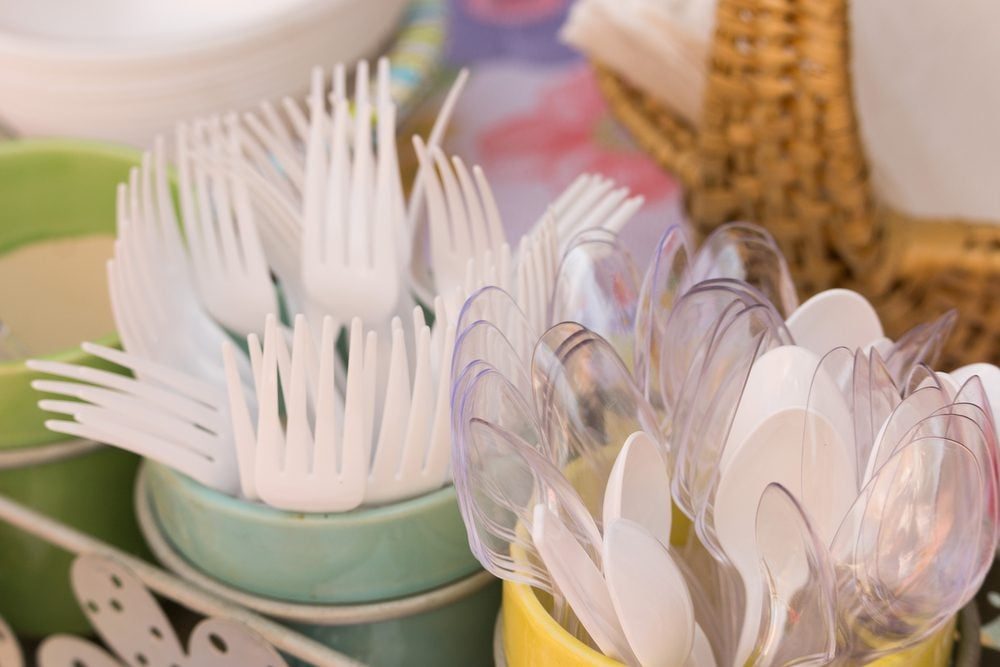
Plastic cutlery
All those nights of takeout come with plastic cutlery for your convenience. Whether they give you more than you need, or you instantly opt for your own real-deal silverware, you’ve likely procured quite the stack in your drawer, and if you’re not going through them, why keep them around? For cutlery that’s disposable, toss it in the recycling bin. And better yet, the next time you order in, tell the restaurant to hold the plastic forks and knives.
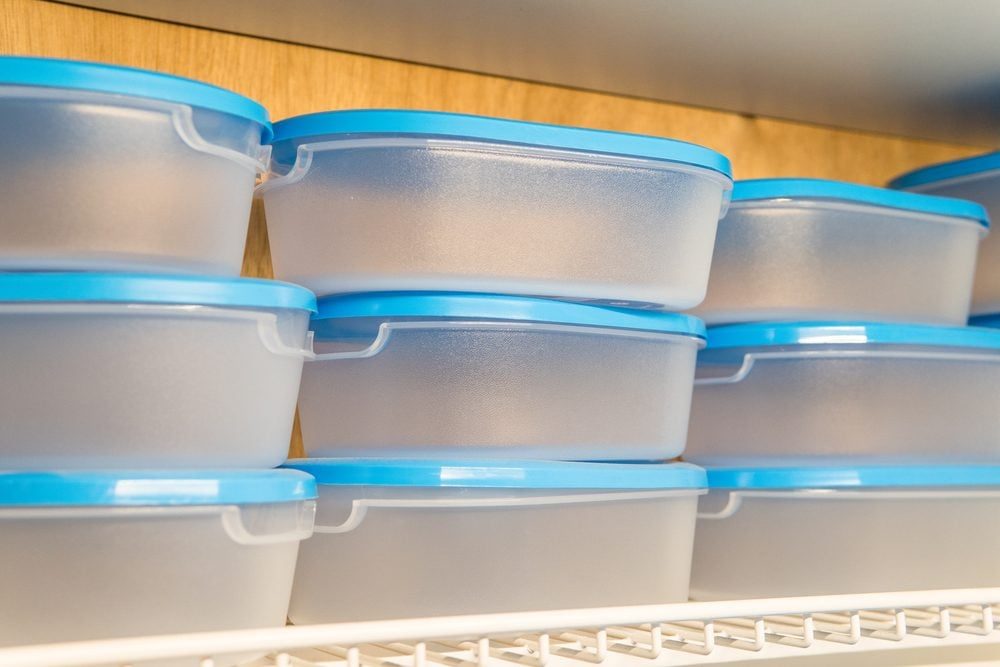
Old plastic storage containers
One of the most frustrating sources of clutter in the kitchen: food storage containers. Where’s the matching lid? Why can’t you keep the cabinet with all the plastic containers organized, no matter how hard you try? Not only do they create a cluttered disaster, but there are actual dangers of old plastic. Because some plastic containers use polycarbonate, which can leach hormone-disrupting chemicals into food items after repeated use, it’s best to swap for glass or silicone.
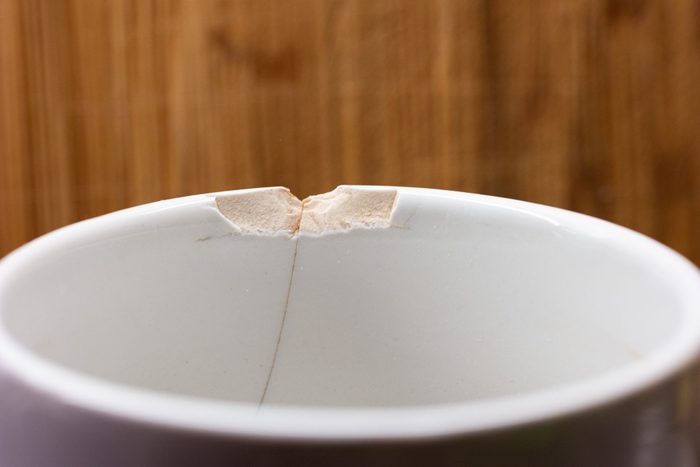
Chipped plates, bowls, mugs
Just because your plates can still hold food doesn’t mean you need them. If your plates, bowls, mugs, or other dishware have chips in them, not only can they cut you, they can harbor bacteria and increase your exposure to lead.
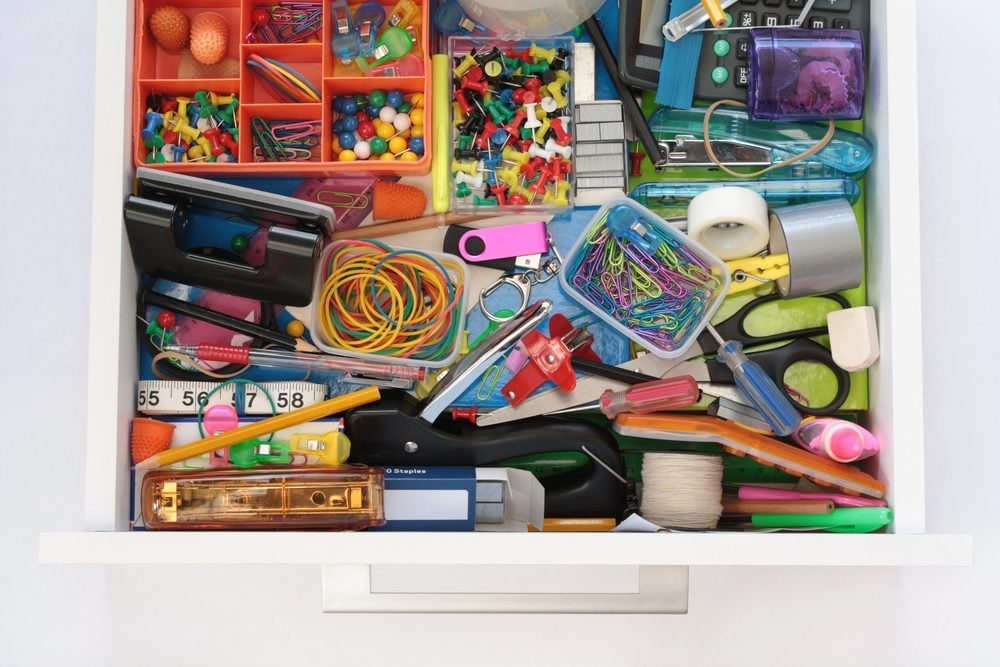
The junk drawer
It goes without saying that a junk drawer goes from being a place for miscellaneous items to an overflowing space holding more nonessential items than stuff you actually want easy access to. Go through it quarterly, making sure anything that’s in there is something you truly need. The rest you can toss, like extra rubber bands, plastic bags, chopsticks, business cards, and more.
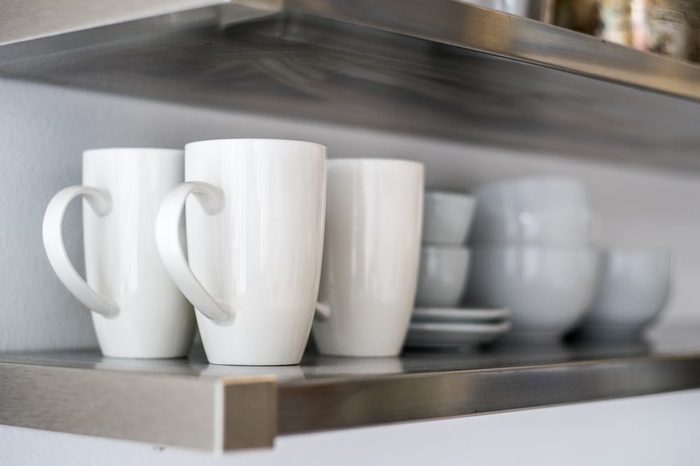
Extra cups and mugs
It’s so nice having well-organized cabinets, with your cups and mugs lined up just right, but how often does that last? When you have too many, it’s impossible to keep things straight. And besides, how much coffee can your family drink in one day?
